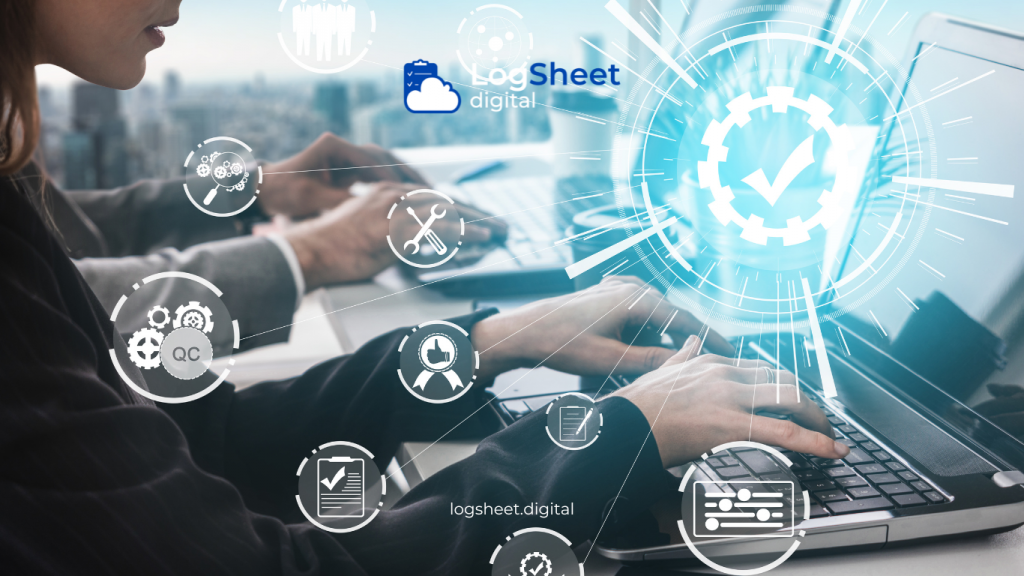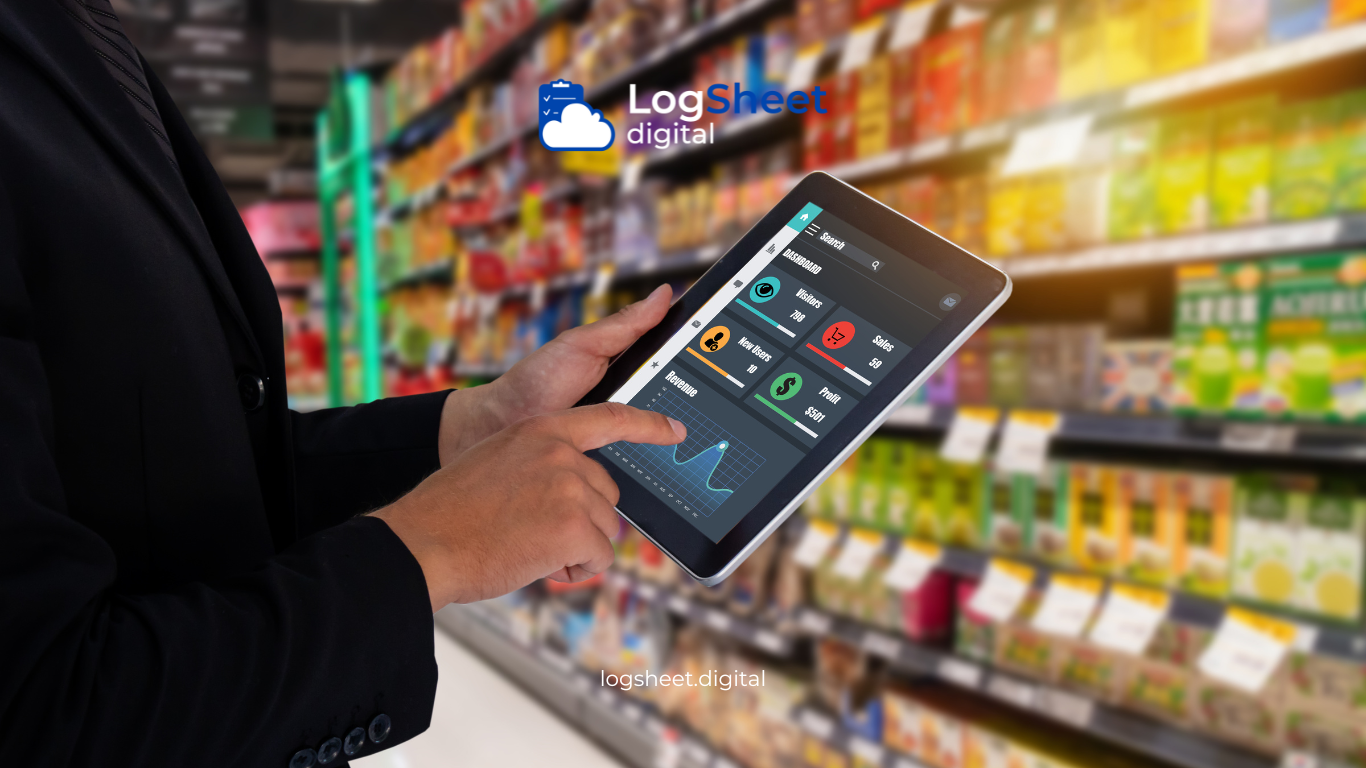In modern industry, accuracy and reliability of equipment are crucial. Proper calibration ensures that equipment functions according to specified standards. With advancements in technology, digital logsheets for calibration performance analysis have emerged as a vital tool in managing and analyzing calibration. This article will discuss how Digital Logsheet Calibration Performance Analysis are used for measurement and performance improvement, as well as the benefits and challenges associated with them.
What is a Digital Logsheet?

Read More: Digital Transformation in Calibration Management: The Role of Digital Logsheets in Industry
Definition and Function
A digital logsheet is an electronic platform used to record, store, and manage calibration data. Unlike traditional paper logsheets, digital logsheets leverage software to provide easier access and more advanced data analysis.
Main functions of digital logsheets include:
- Data Recording: Storing calibration data electronically, reducing the risk of information loss and recording errors.
- Data Management: Organizing and managing calibration data in a structured and accessible format.
- Performance Analysis: Using analytical tools to monitor and evaluate calibration performance.
- Reporting: Providing customizable and easy-to-understand reports.
Key Components of a Digital Logsheet
Digital logsheets typically include several key components:
- User Interface: Platform that allows users to enter and access data.
- Database: Structured storage of calibration data.
- Analysis Features: Tools for analyzing data and generating insights.
- Reporting Features: Ability to create and distribute calibration reports.
Benefits of Digital Logsheets in Calibration Performance Analysis

Read More: Applying Digital Logsheets for Tracking and Monitoring Calibration
1. Accuracy and Consistency of Data
Digital logsheets enhance accuracy and consistency in recording calibration data. With an electronic system, the risk of human errors in recording is minimized. More accurate data leads to better analysis and more precise decision-making.
Case Example: A manufacturing company uses digital logsheets to record machine calibration results. By reducing manual recording errors, they ensure that the calibration data is more consistent and reliable.
2. Efficiency in Data Management
Digital logsheets improve efficiency in managing calibration data by automating recording and reporting processes. This reduces the time required to collect and process data, allowing staff to focus on analysis and improvements.
Case Example: In a chemical plant, digital logsheets replace manual calibration recording processes. Tasks that previously took several days can now be completed in hours due to automated data and reporting.
3. Enhanced Performance Analysis
One major advantage of digital logsheets is their ability to perform more in-depth performance analysis. With built-in analytical tools, companies can monitor trends, identify potential issues, and take corrective actions before problems escalate.
Case Example: An energy company uses digital logsheets to monitor calibration performance of equipment. They can see performance decline trends and perform preventive maintenance to avoid operational disruptions.
4. Improved Reporting and Compliance
Digital logsheets facilitate the creation of more structured and readable reports, helping companies meet regulatory requirements and industry standards. The reports generated can also be customized and easily shared with relevant parties.
Case Example: In the pharmaceutical industry, digital logsheets streamline the creation of calibration reports required for compliance. The generated reports also simplify audit and inspection processes.
Challenges in Implementing Digital Logsheets

Read More: Addressing Challenges in Digital Logsheets Implementation for Calibration
1. Implementation Costs
The cost of implementing digital logsheets, including hardware, software, and staff training, can be a challenge. Companies need to consider the budget and potential long-term cost savings before making an investment.
Solution: Consider cloud-based solutions that can reduce initial costs and use online training to save on training expenses.
2. Integration with Existing Systems
Integrating digital logsheets with existing management systems can be complex. Companies may face challenges ensuring that digital logsheets work well with other systems in use.
Solution: Choose software solutions that offer good integration capabilities and collaborate with technology providers to develop the necessary interfaces.
3. Data Security
With data stored digitally, data security becomes a critical concern. Companies need to ensure that calibration data is protected from unauthorized access and breaches.
Solution: Implement strict security policies, use data encryption, and set appropriate access controls to protect calibration data.
Steps for Successful Implementation of Digital Logsheets

Read More: Sustainability in Safety: How Digital Logsheets Impact the Industry
1. Evaluate Needs and Technology Options
The first step in implementing a digital logsheet is to evaluate the company’s specific needs and choose appropriate technology. Consider the types of data that need to be recorded, integration with other systems, and required analytical features.
Action: Conduct needs assessments and cost-benefit analyses to select a solution that fits the company’s budget and requirements.
2. Planning and System Development
Once technology is selected, create an implementation plan that includes system development, integration with existing systems, and staff training. Ensure all aspects of the system are designed to meet the company’s needs.
Action: Work with technology providers to develop the solution and conduct system testing before full deployment.
3. Training and Deployment
Train staff who will use the digital logsheets to ensure they understand how to use the system and leverage all available features. Implement the system gradually to minimize operational disruptions.
Action: Provide comprehensive training and ongoing support for staff, and monitor system deployment to ensure success.
4. Maintenance and Regular Evaluation
After the system is implemented, perform regular maintenance and evaluations to ensure that the digital logsheets are functioning well and meeting the company’s needs. Follow up on user feedback and make improvements as needed.
Action: Establish a maintenance schedule and conduct performance evaluations regularly to ensure the system remains efficient and effective.
Case Studies: Digital Logsheet Implementation in Industry

Read More: Optimizing Warehouse and Logistics Efficiency with Digital Logsheets
Case 1: Manufacturing Industry
A large manufacturing company decided to replace their paper logsheets with digital logsheets for equipment calibration management. By using a digital system, the company was able to reduce recording errors, improve reporting efficiency, and facilitate easier data access.
Results: The company experienced a reduction in reporting time from several days to a few hours and a significant decrease in recording errors. They also performed trend analysis on calibration to improve processes and reduce maintenance costs.
Case 2: Pharmaceutical Industry
In the pharmaceutical industry, accurate calibration management is crucial for ensuring product quality. A pharmaceutical company used digital logsheets to monitor the calibration of their laboratory and production equipment.
Results: The company improved the accuracy of calibration data and sped up the reporting process. They also better met regulatory requirements and increased transparency in their calibration processes.
Conclusion

Read More: Digital Logsheets and Sustainability: Optimizing Resource Use in Workshops
Digital logsheets have transformed the way companies manage and analyze calibration data. With benefits such as increased accuracy, operational efficiency, better analysis capabilities, and enhanced reporting, digital logsheets are a crucial tool in modern calibration management.
Although there are challenges related to costs, system integration, and data security, the long-term benefits of digital logsheets make them a valuable investment. By selecting the right technology, providing thorough training, and ensuring regular maintenance, companies can leverage digital logsheets for more efficient, accurate, and sustainable calibration management.
This digital transformation in calibration management is not just about adopting new technology but also about improving processes and ensuring that companies can operate more effectively and meet increasingly stringent quality standards.






leave your comments